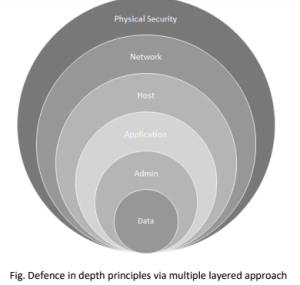
WASHINGTON, February 13, 2024 – The federal government unveiled Monday a $42-million grant for a project to establish a research and development center focused on facilitating research into new testing methods to seamlessly integrate 5G Open RAN software into U.S. cellular networks.
Led by a consortium of US and foreign carriers, universities and equipment suppliers, the initiative will develop a testbed for the 5G technology in the Dallas Technology Corridor with a satellite facility in Washington, D.C.
At an event announcing the award, representatives of the federal government classified advancing Open RAN technology as both a “national security” and “American innovation concern.” Their discussion touched on challenges facing American technological leadership in the wireless communications industry and the importance of keeping up with global competitors, mainly Chinese giants Huawei and ZTE.
“Just a few firms today provide the full set of radios and computers that power our mobile networks. Some of those equipment vendors pose national security risks to the US and to our allies around the world. The result is that we have a wireless equipment market where costs are higher, resilience is lower, and American companies are increasingly shut out,” remarked Alan Davidson, the administrator of the National Telecommunications and Information Administration, which administers the Public Wireless Supply Chain Innovation Fund from which the funding is derived.
Davidson underscored that “change is on the way,” as the US government shares a vision of deploying open and trusted cellular networks globally and is actively working toward this goal through investments made through the $1.5 billion fund.
Open RAN, an abbreviation for Open Radio Access Networks, signifies a shift away from conventional hardware configurations in networks towards a software-driven approach. The software aims to disaggregate the traditionally integrated RAN hardware and software in cellular networks.
While traditional networks rely on a single company to supply every component, Open RAN is interoperable. Network architects can curate parts from different suppliers to build the best possible network. New suppliers can enter the market with one part instead of an entire network architecture. By transitioning to Open RAN, the US and partner countries can help the wireless ecosystem flourish for 5G and beyond, according to officials.
The government representatives remarked that grants awarded through the NTIA’s Wireless Innovation Fund are poised to enhance domestic competition, fortify US supply chains, and lower costs for consumers, all while safeguarding national security.
AT&T and Verizon will take lead on the project, while the University of Texas at Dallas assumes a crucial role in managing the Dallas center. Additionally, Virginia Tech, Northeastern University, Iowa State University, and Rutgers University will provide neutral laboratory support, resulting in the creation of numerous job opportunities for graduates of the participating institutions.
Senator Mark Warner, D-Virginia, chairman of the Senate Select Committee on Intelligence, admitted frankly that the US was late in sounding the alarm on Huawei and ZTE.
The government allocated $1.9 billion in taxpayer money to remove foreign network equipment from some of the smaller telcos around the country with the passage of the Secure and Trusted Communications Networks Act of 2019. However, this initiative has faced a funding shortfall of $3.08 billion, and only a few companies have managed to complete the “rip and replace” efforts.
Warner highlighted China’s efforts to dominate not only as providers but also in influencing standard-setting bodies globally. “If nation states around the world go with Huawei and ZTE and go to those standards” the US is going to be left behind, he noted.
Secretary of Commerce Gina Raimondo expressed her gratitude to representatives from the Japanese and Indian embassies present in the audience, acknowledging their contributions to securing global supply chains. She emphasized the collaborative nature of this endeavor, describing it as a global effort.
During the award unveiling, Senator Richard Burr, R-North Carolina, received applause for his efforts in establishing the $1.5 billion Wireless Innovation Fund aimed at enhancing US competitiveness with China in the technology sector, with Senator Warner credited for playing a key role in championing the effort on the Senate floor.
This initiative is funded by the CHIPS and Science Act of 2022 which authorizes roughly $280 billion in new funding to boost domestic research and manufacturing of semiconductors in the United States.
“It’s really a testimony to what we may be able to do when we work together,” remarked NTIA Administrator Alan Davidson.
With this award, $140 million from the Wireless Innovation Fund has been invested in 17 initiatives. NTIA Administrator Alan Davidson announced that the next round of larger Open RAN grants will be released this spring. The remaining funds will be invested over the next decade to support the development of open and interoperable networks.

